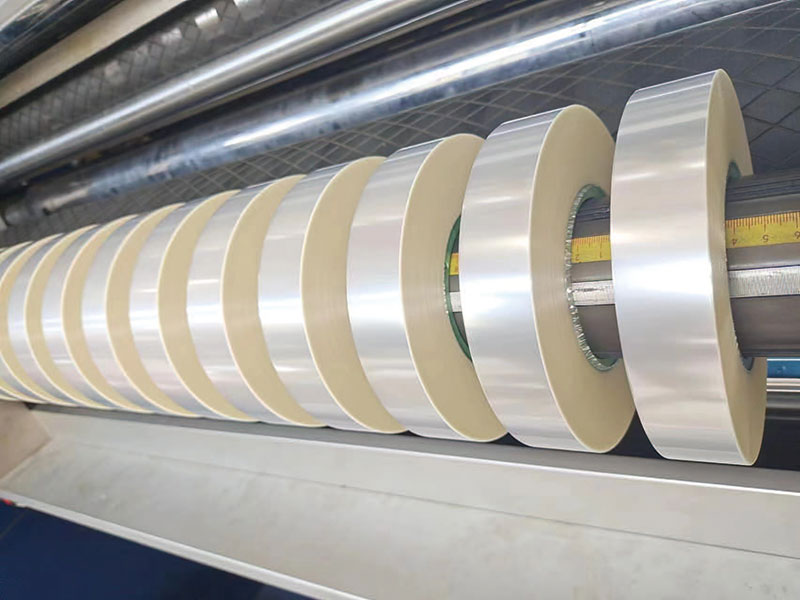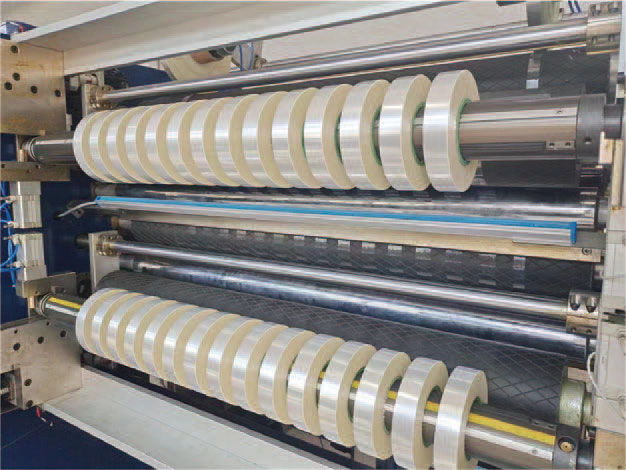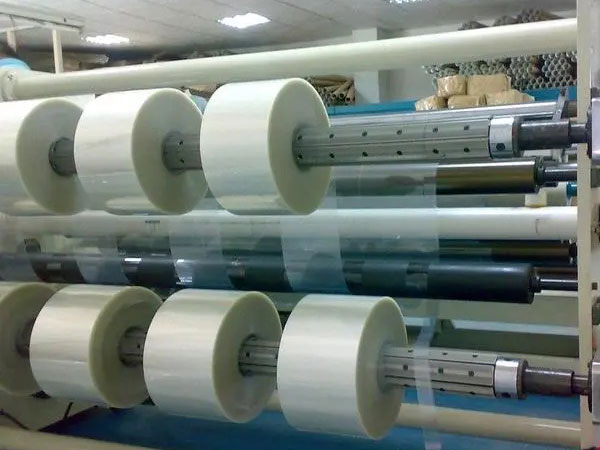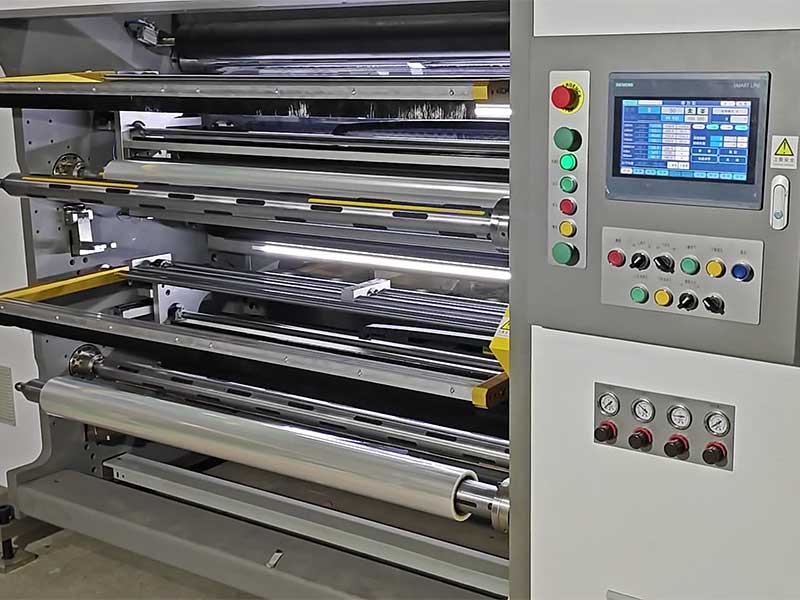Selecting slitting machine blades based on film material is key to ensuring slitting quality, improving production efficiency, and extending blade life. The physical and chemical properties of the three common films of PVC, PET, and PP vary greatly, so the requirements for the blade are also very different.
Below I will explain in detail how to choose a blade according to the material and provide a concise selection guide.
Core selection principles
When selecting a blade, consider the following four core elements:
1. Blade Material: Determines the blade's hardness, wear resistance, and corrosion resistance.
2. Edge Angle: Determines the sharpness and strength of the blade. The smaller the angle, the sharper it is, but the lower the strength, suitable for soft film; The larger the angle, the stronger it is suitable for hard or thick films.
3. Blade Coating: Used to enhance the surface hardness of the blade, reduce the coefficient of friction, prevent material adhesion, and improve corrosion resistance.
4. Blade Type: Such as single-edged knives, double-edged knives, round blades, etc., suitable for different slitting methods (such as cutting, slicing) and equipment.

Characteristics of the three films and blade options
1. PVC (Polyvinyl Chloride Film)
• Material Properties:
◦ Softer, with some elasticity and ductility.
◦ It is easy to stretch and deform when slitting.
◦ Sensitive to heat, friction heat generation can easily lead to melting and sticking knives.
◦ Some PVC formulations contain elements such as chlorine, which may be slightly corrosive to the blade.
• Blade Options:
◦ Blade material: Stainless steel is preferred, such as 440C or higher grade molybdenum-containing stainless steel (e.g., 8Cr13MoV). Stainless steel effectively resists corrosion and keeps the blade sharp for a long time.
◦ Blade Angle: A sharp blade with a smaller angle (20°-30°) is recommended. A sharp edge cuts through material cleanly rather than "ripping" or "pulling off", reducing edge stretching and burrs.
◦ Coating: Teflon/PTFE coatings are an excellent choice. It greatly reduces the coefficient of friction, prevents PVC melt from sticking to the blade, keeps the cut clean, and reduces product deformation due to heat buildup.
◦ Precautions: Avoid using ordinary carbon steel blades, which are prone to rust and not corrosion-resistant. Be sure to keep the blade highly sharp, blunt knives are the enemy of slitting PVC.

2. PET (Mylar / BOPET)
• Material Properties:
◦ High hardness, high strength and good toughness.
◦ Very wear-resistant and wears a lot on the blade.
◦ Chemically stable and non-corrosive.
◦ The cut edge is required to be very flat, smooth, and burr-free.
• Blade Options:
◦ Blade material: Materials with high hardness and high wear resistance must be used. Ceramic blades (zirconia) are the best choice. Ceramics are extremely hard (second only to diamond), more than 10 times more resistant to wear than steel knives, and never rust, so they can remain extremely sharp for a long time. Secondly, you can choose high-quality powder metallurgy steel (such as M2, M42 high-speed steel) or tungsten carbide (Tungsten Carbide) coated blades.
◦ Cutting edge angle: Medium angle (30°-45°). A balance between sharpness and strength is needed to ensure that it can cut through hard PET films while resisting chipping.
◦ Coating: Diamond-like (DLC) or tungsten carbide (WC/C) coatings further improve the surface hardness and wear resistance of steel inserts. For ceramic blades, coating is not required.
◦ Precautions: PET is a "blade killer" and is very sensitive to sharpness loss. Once the blade becomes dull, it immediately produces a lot of burrs and dust. Ceramic blades are expensive but have an extremely long lifespan and may have a lower overall cost.
3. PP (Polypropylene Film, Including BOPP, CPP)
• Material Properties:
◦ Softer material, but tougher than PVC.
◦ Excellent toughness and strong tear resistance.
◦ Also sensitive to heat and easy to stick knives.
◦ Chemically stable and non-corrosive.
• Blade Options:
◦ Blade material: wide range of choices. High-quality tool steel (e.g. SK5, CR-V) or stainless steel can be used. Ceramic blades can also be considered if longer lifespan is required.
◦ Cutting edge angle: A very sharp edge with a moderate angle (25°-35°) is required. The sharp edge can easily cut into the soft PP film, while the moderate angle provides sufficient support to prevent the blade from "letting the knife" or shake under the toughness of the material, thus ensuring the straightness of the cut.
◦ Coating: Teflon coating is also very effective, effectively preventing softening PP material from sticking to the knife and keeping the cut neat.
◦ Precautions: The common problems of PP film slitting are cutting incessant and sticking knives. Ensuring the blade is sharp and applying an anti-stick coating is the solution.

Quick selection comparison table
| characteristic | PVC film | PET film | PP film |
| Preferred material | Stainless steel (440C, etc.) | Ceramic/cemented carbide steel | Tool steel/stainless steel |
| Recommended coating | Teflon (PTFE) | DLC/Tungsten Carbide (or not) | Teflon (PTFE) |
| Blade angle | Small angle (20°-30°) | Medium angle (30°-45°) | Medium to small (25°-35°) |
| Core requirements | Sharp, anti-stick, anti-corrosion | Extremely wear-resistant and high hardness | Sharp, anti-stick, good toughness |
| Alternative | Chrome plated steel knife | Tungsten carbide coated steel knives | Ordinary carbon steel knife (needs to be changed frequently) |
Other important practical suggestions
1. Slitting method:
◦ Shear Cut: Use the upper and lower double knives (one round knife and one bottom knife) to cut like scissors. It is suitable for thicker materials (e.g. above 50μ) and has the highest requirements for blade wear resistance.
◦ Razor Slit: Use a single-edged blade to scend directly over the cut material on the platform. It is suitable for extremely thin materials such as packaging films and requires extremely high blade sharpness.
◦ Choose the correct blade mounting form (e.g., tool holder, pneumatic, etc.) according to your type of slitting machine.
2. Blade Maintenance:
◦ Timely replacement and sharpening: Even the best blades will become dull. Establish a system for regular inspection and replacement of blades. For expensive ceramic blades or alloy steel blades, they can be restored to sharpness by professional sanding, reducing costs.
◦ Cleaning: Clean the blade after each use to prevent material residue from corrosion or damage to the edge.
3. Testing and Verification:
◦ Before mass production, be sure to perform small batch test cuts. Checking the quality of the cutting edge, the presence of burrs and chips is the only criterion for finally confirming whether the blade selection is suitable.
To sum up: the soft film (PVC/PP) should be sharp and anti-stick, and choose stainless steel + Teflon coating; The dural film (PET) should be hard and wear-resistant, and ceramic blades are preferred. Hopefully, this detailed guide will help you make an accurate choice!

The intelligent control design of the new generation of film slitting machine represents the transformation of industrial equipment from "tool" to "partner".
20. December, 2025
Achieving continuous 1,000 hours of trouble-free operation requires not only systematic technical upgrades, but also all-round innovation from design concept to maintenance strategy.
20. December, 2025
In the face of a dazzling array of models on the market, how to make informed decisions when purchasing?
20. December, 2025
These film materials need to be precisely cut into different widths during the production process to meet the needs of various models and components.
10. December, 2025
The automotive film slitting machine, an increasingly intelligent "cutting knife", is accurately cutting out redundant costs, inefficient processes and backward production methods.
10. December, 2025